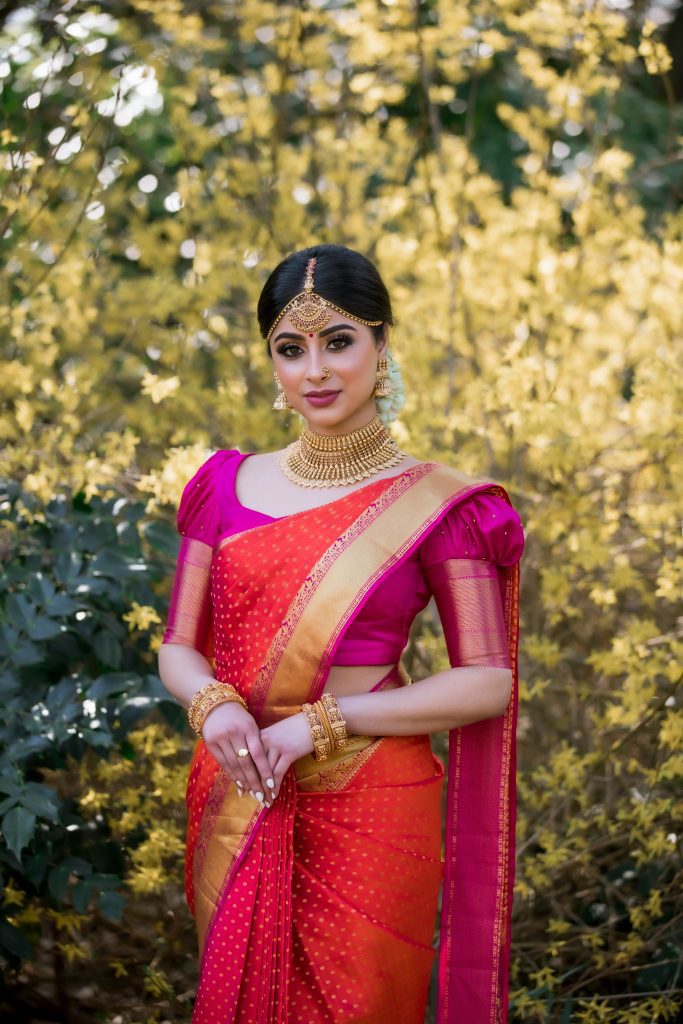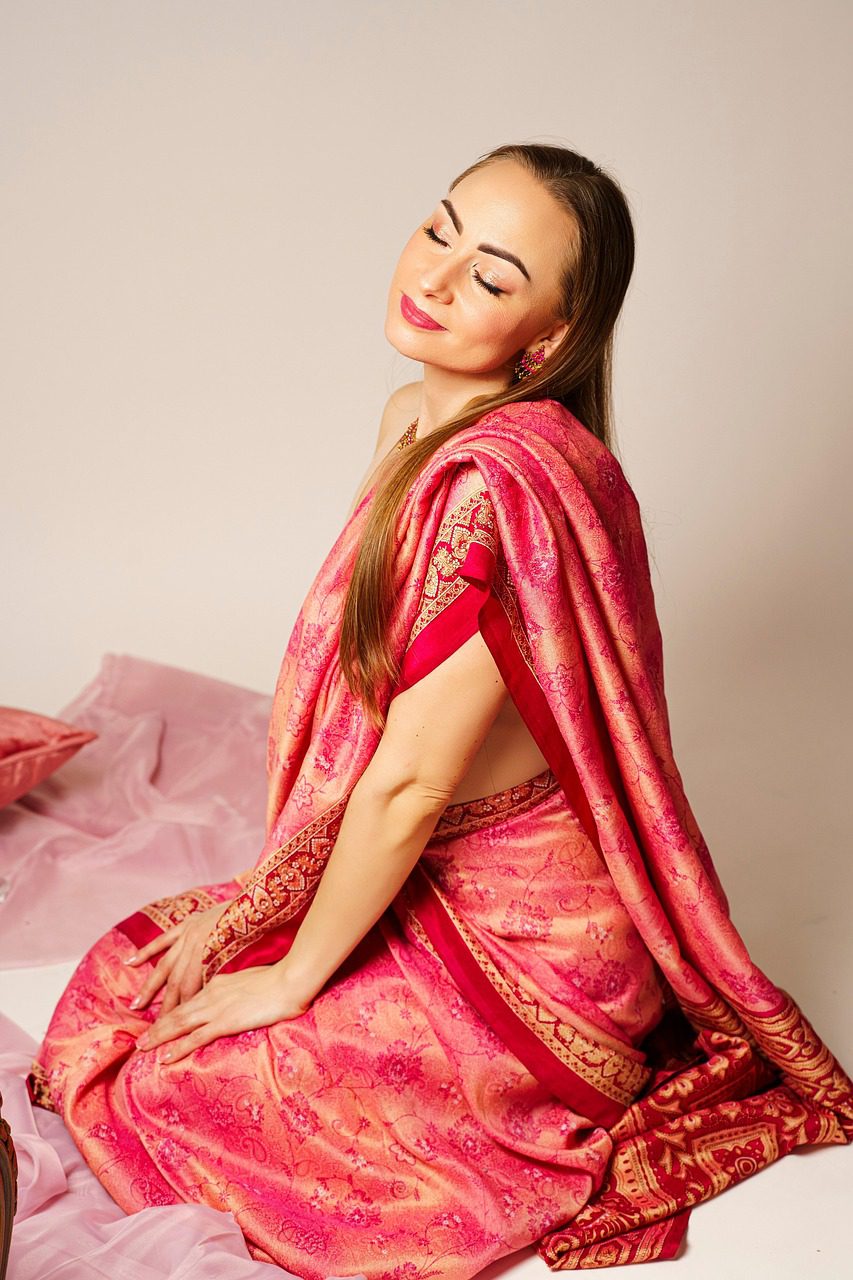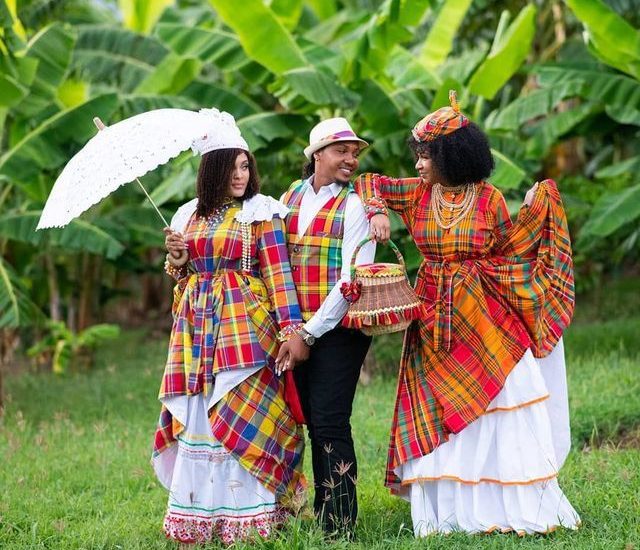The Sari’s Journey from India to the World
The sari dress, a symbol of cultural heritage, transcends mere clothing. A vibrant tapestry that drapes the bodies and hearts of women across the Indian subcontinent. For centuries, the sari has captivated people with its elegance, versatility, and ability to express personal style. Let’s embark on a journey to unveil the magic of this timeless Indian tradition.
The Brief History of Saris
The sari, also known as saree, derives its name from the Sanskrit word for “a strip of cloth.” This tradition of wearing unstitched clothes goes back to the earliest days of the Indian subcontinent. Evidence of this practice can be seen in the shawl draped on a statue of an Indus priest, dating back to 2500 BCE. Remarkably, the sari has endured for centuries, weathering cultural, economic, and technological transformations. Even today, natural dyes like indigo, lac, and turmeric continue to be used, a testament to the enduring legacy of these textile traditions.

The Evolution of Sari Over Time
The Indian saree is a testament to artistic evolution, constantly adapting to different regions, social classes, and cultural influences. Far from being a static garment, the saree has been maintained, toiled over, modified, and continues to emerge in new forms. It utilizes diverse fabrics, styles, drapes, and dyes, yet consistently conveys grace, power, and comfort to the wearer.
Over centuries, the saree evolved into a garment worn by women of all social classes. This ubiquity is reflected in the regional variations that emerged. Different regions developed their unique draping styles and even terminology for the saree. For example, the Nivi style from South India drapes the saree around the legs instead of tucking it in at the waist. The Bengali style features a distinctive fold at the saree’s pallu (end piece).
This regional diversity extends to the names of the garment itself. While “sari” is the most widely recognized term, other names exist depending on the region. Some examples include Lugda (Maharashtra), Dhoti (Maharashtra & Karnataka), Pata (Odisha), Seer (Assam), Sadlo (Gujarat), and Kapad (Himachal Pradesh). These variations showcase the deep integration of the saree into the cultural fabric of different regions across India.

Mughal Influence (16th – 18th Centuries):
The arrival of the Mughals in India significantly impacted the saree’s aesthetics. They introduced:
- Rich Fabrics: Velvets, brocades, and heavily embroidered silks became popular, reflecting Mughal courtly grandeur.
- Embellishments: Zari work (gold thread embroidery), intricate floral patterns, and jewel tones became hallmarks of Mughal-influenced sarees. These embellishments added a layer of luxury and artistry to the garment.
The British Raj (18th – 19th Centuries):
British rule also brought changes:
- Blouse and Petticoat: The concept of a blouse and petticoat worn under the saree became the norm during this period, likely to align with Victorian aesthetics.
- New Techniques: The introduction of new weaving, dyeing, and printing techniques from Britain further diversified the saree’s design possibilities.
Modern Transformations:
Today, the saree continues to evolve:
- Designer Innovation: World-renowned designers are experimenting with new styles, fabrics like georgette and chiffon, and contemporary silhouettes, keeping the essence of the saree alive while catering to modern tastes.
- Revival of Traditions: There’s a renewed appreciation for traditional saree-making techniques, natural dyes like indigo and lac, and regional weaving styles.
- Fashion: Interesting trends like pairing sarees with sneakers, jeans, or blazers are emerging, creating a unique fusion of traditional and contemporary styles. This “Indo-Western” look is particularly popular among youngsters.
The Indian saree’s remarkable journey reflects its enduring legacy and adaptability. It is a vibrant symbol of Indian culture, constantly reinventing itself while staying true to its roots.
The Sari: Between Culture and Identity
In Indian culture, Sari transcends a vibrant symbol of tradition, femininity and much more. Here’s how the sari embodies these cultural values:
- Respect for Tradition and Elders: A sari signifies respect for age-old customs and family values. It’s a way for younger women to connect with their heritage and show reverence to elders who have passed down these traditions.
- 2. Dignity and Grace: The elegant drape of a saree is believed to imbue the wearer with a sense of dignity and grace. The way it flows and complements a woman’s form is seen as an embodiment of poise and elegance.

- 3. Symbol of Modesty and Femininity: Traditionally, the saree is associated with modesty and femininity. Its style reflects cultural ideals of womanhood and serves as a marker of cultural identity.
- 4. Confidence and Empowerment: The sari isn’t just about adhering to norms. Recently, it has become a symbol of confidence and empowerment for women. Wearing a Sari allows them to embrace their heritage while expressing their individuality.
The Social and Economic Impact of Sari
The Indian sari isn’t just a garment; it’s a vibrant thread woven into the social and economic fabric of the nation. Here’s a deeper look at its impact:
- The Sari industry employs millions of weavers and artisans across India. These craftspeople possess skills passed down through generations, meticulously crafting each saree with intricate details.
- Sari production is often concentrated in rural areas, providing crucial employment opportunities and income sources, especially for women.
- The Sari industry keeps age-old weaving, dyeing, and embroidery techniques alive, ensuring these artistic traditions don’t fade away.
- India is a major exporter of textiles, and sarees are a significant part of this contribution. The industry generates foreign exchange and stimulates economic growth.
Despite its strengths, the sari industry faces challenges, including competition from power looms and cheaper, mass-produced garments.
For Travelers to India: Witness the artistry firsthand by visiting weaving communities or attending saree exhibitions during your trip.
References:
Times of India. (2023, February 22). The history of sari – The nine-yard wonder. https://pulimoottilonline.com/blogs/news/the-history-and-evolution-of-sarees-from-ancient-india-to-modern-times
Teen Vogue. (n.d.). On saris’ history, accessibility, and how to embrace modernity without dishonouring tradition. https://www.vogue.in/content/how-to-style-your-saree-in-interesting-ways-this-season
Kumar, Vandana. “Evolution of the Saree.” India Currents, indiacurrents.com. Accessed 19 June 2024.https://indiacurrents.com/evolution-of-the-saree/


